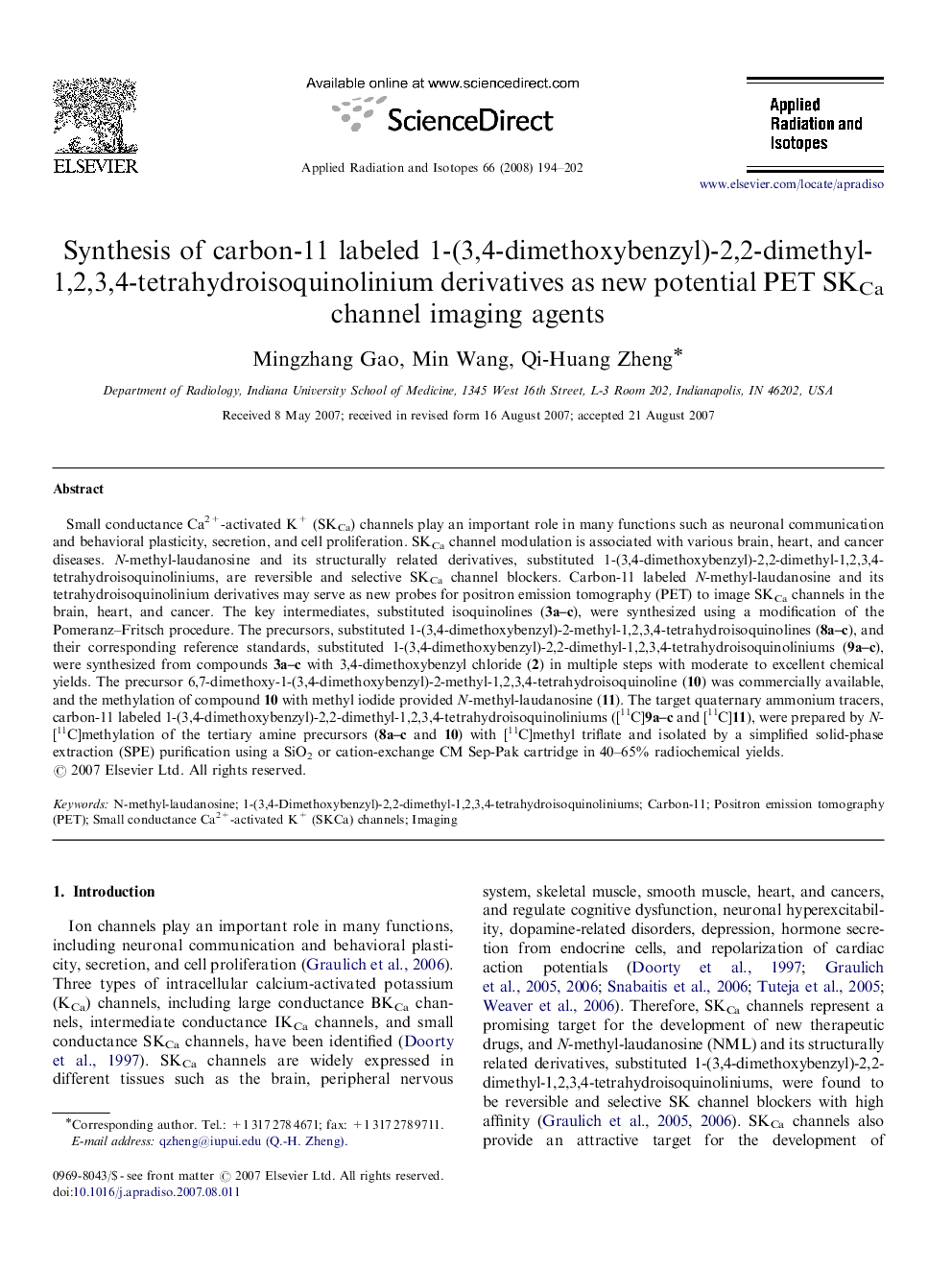| Article ID | Journal | Published Year | Pages | File Type |
|---|---|---|---|---|
| 1877190 | Applied Radiation and Isotopes | 2008 | 9 Pages |
Small conductance Ca2+-activated K+ (SKCa) channels play an important role in many functions such as neuronal communication and behavioral plasticity, secretion, and cell proliferation. SKCa channel modulation is associated with various brain, heart, and cancer diseases. N-methyl-laudanosine and its structurally related derivatives, substituted 1-(3,4-dimethoxybenzyl)-2,2-dimethyl-1,2,3,4-tetrahydroisoquinoliniums, are reversible and selective SKCa channel blockers. Carbon-11 labeled N-methyl-laudanosine and its tetrahydroisoquinolinium derivatives may serve as new probes for positron emission tomography (PET) to image SKCa channels in the brain, heart, and cancer. The key intermediates, substituted isoquinolines (3a–c), were synthesized using a modification of the Pomeranz–Fritsch procedure. The precursors, substituted 1-(3,4-dimethoxybenzyl)-2-methyl-1,2,3,4-tetrahydroisoquinolines (8a–c), and their corresponding reference standards, substituted 1-(3,4-dimethoxybenzyl)-2,2-dimethyl-1,2,3,4-tetrahydroisoquinoliniums (9a–c), were synthesized from compounds 3a–c with 3,4-dimethoxybenzyl chloride (2) in multiple steps with moderate to excellent chemical yields. The precursor 6,7-dimethoxy-1-(3,4-dimethoxybenzyl)-2-methyl-1,2,3,4-tetrahydroisoquinoline (10) was commercially available, and the methylation of compound 10 with methyl iodide provided N-methyl-laudanosine (11). The target quaternary ammonium tracers, carbon-11 labeled 1-(3,4-dimethoxybenzyl)-2,2-dimethyl-1,2,3,4-tetrahydroisoquinoliniums ([11C]9a–c and [11C]11), were prepared by N-[11C]methylation of the tertiary amine precursors (8a–c and 10) with [11C]methyl triflate and isolated by a simplified solid-phase extraction (SPE) purification using a SiO2 or cation-exchange CM Sep-Pak cartridge in 40–65% radiochemical yields.
